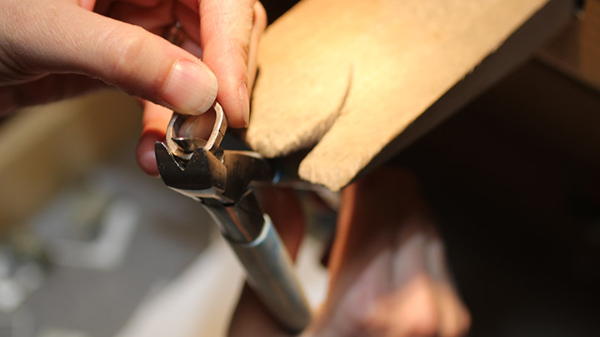Crafting a gold ring is an art that spans millennia, blending ancient techniques with modern innovations to create timeless pieces of jewelry. From the sourcing of raw materials to the intricate detailing of the final product, each step in the process requires precision, skill, and attention to detail. In this comprehensive guide, we delve into the intricate journey of producing a gold ring, exploring every stage from gold mining to distribution. Whether you’re a jewelry enthusiast, a budding artisan, or simply curious about the craftsmanship behind these cherished adornments, join us as we uncover the secrets and intricacies of this age-old craft.
- Gold Sourcing: Gold can be sourced from various locations, including mines, recycled materials, or purchased from suppliers. Responsible sourcing practices are often employed to ensure ethical and sustainable procurement.
- Assaying: Before refining, the gold is assayed to determine its purity level. This involves testing a small sample of the gold to measure its composition accurately.
- Refining: The gold undergoes a refining process to remove impurities such as other metals, dirt, or organic materials. Common methods include electrolysis, chemical refining, or smelting.
- Alloying: Pure gold is alloyed with other metals to enhance its properties. The specific alloying elements and proportions depend on the desired characteristics of the final product, such as color, hardness, and durability.
- Casting Preparation: The refined gold alloy is melted in a crucible, often in combination with flux to remove any remaining impurities. The molten gold is then prepared for casting.
- Mold Making: A mold is created to form the desired shape of the ring. Molds can be made from various materials such as silicone, plaster, or metal, depending on the complexity of the design and the casting method used.
- Injection Wax Model: For intricate designs, an injection wax model of the ring may be created using a wax injector. This model serves as a pattern for the casting process.
- Investment Casting: The prepared mold or wax model is used in the investment casting process. The mold is filled with the molten gold alloy, which solidifies to form the basic shape of the ring.
- Quenching and Cleaning: After casting, the ring is quenched in water to cool it rapidly. The casting is then cleaned to remove any residue or investment material, leaving behind a rough casting of the ring.
- Shaping and Forming: The rough casting is shaped and formed using various techniques such as filing, sawing, or machining to achieve the desired dimensions and contours of the ring.
- Soldering: If the ring design includes multiple components or settings, they may be soldered together using a torch and soldering materials.
- Stone Setting: Gemstones, if any, are carefully set into the ring using techniques such as prong setting, bezel setting, or pave setting. This requires precision to ensure the stones are secure and aligned correctly.
- Detailing and Finishing: The ring undergoes further detailing processes such as engraving, polishing, or texturing to enhance its appearance and texture.
- Quality Assurance: The finished ring undergoes rigorous quality control checks to ensure it meets industry standards for purity, craftsmanship, and durability.
- Hallmarking: In many countries, gold jewelry is stamped with a hallmark to indicate its purity and authenticity. This may be done by an independent assay office or regulatory body.
- Packaging and Presentation: The completed rings are packaged in appropriate boxes or pouches for retail sale or presentation to customers. Packaging may include certificates of authenticity or care instructions.
- Distribution: The finished gold rings are distributed through various channels, including jewelry stores, online retailers, or directly to customers through custom orders.
These steps provide a comprehensive overview of the intricate process involved in producing a gold ring, from sourcing the raw materials to delivering the final product to the customer.



